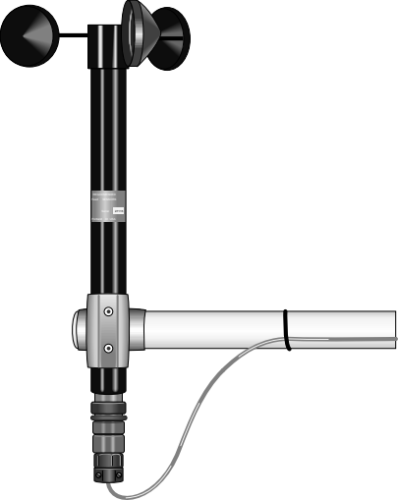All You Required to Know About Anemometers: Just How They Function, Why They Issue, and Where to Utilize Them
Anemometers, though usually forgotten in the world of scientific instruments, play a crucial role in different areas, offering valuable insights into wind speed and air movement patterns. Comprehending the auto mechanics behind these devices is vital for anyone seeking to harness the power of this data. From meteorologists tracking climate patterns to engineers designing structures with wind tons in mind, the applications of anemometers are varied and significant. As we delve into the intricacies of anemometer technology, we will uncover the inner workings of these tools, their significance, and the vital factors to consider when choosing the ideal anemometer for certain applications.

Anemometer Basics
An essential instrument made use of to measure wind rate and instructions, the anemometer plays a critical role in meteorology and various markets. An anemometer usually is composed of 3 or four mugs that revolve in the wind, a vane that points right into the wind, and sensing units to track the rotations or movements.
There are different kinds of anemometers offered, including mug anemometers, vane anemometers, hot-wire anemometers, and sonic anemometers, each with its one-of-a-kind attributes and applications. Mug anemometers are frequently utilized for basic wind speed dimensions, while vane anemometers are liked for directional measurements. Hot-wire anemometers are appropriate for low airspeeds, and sonic anemometers are optimal for high-precision measurements in research and industrial setups. Recognizing the fundamentals of anemometers is vital for exact wind data collection and analysis across different industries.
Principles of Anemometer Procedure
Building on the fundamental understanding of anemometer essentials, the concepts of anemometer procedure illuminate the mechanics behind wind speed and direction dimensions. Cup anemometers, for instance, have three or more cups that record the wind, triggering them to rotate faster as the wind rate rises. Hot-wire anemometers depend on a warmed cord that cools down as wind passes over it, with the price of cooling down determining the wind speed.
Value of Anemometers
The value of anemometers in meteorology and various sectors can not be overemphasized. Anemometers play an essential role in measuring wind speed and direction, offering essential data for weather projecting, climate studies, ecological tracking, and aeronautics operations. Meteorologists depend on anemometers to collect exact wind information, helping them recognize weather condition patterns, forecast storms, and issue timely warnings to the general public. In sectors such as building and construction, farming, renewable resource, and maritime procedures, anemometers are utilized to optimize processes, guarantee security, and increase effectiveness. Wind ranch drivers make use of anemometers to assess wind conditions and make the most of power production from wind turbines. In the maritime sector, anemometers help ship navigating by giving real-time wind info to captains, helping them make informed choices to make sure safe voyages. Generally, anemometers are indispensable tools that add dramatically to safety, efficiency, and informed decision-making in meteorology and a variety of markets.
Applications Across Different Industries
Applications of anemometers cover across diverse markets, showcasing their versatility and utility past meteorology. In the sustainable power market, anemometers play a critical duty in analyzing wind web link problems for wind ranch positionings, making certain optimum power manufacturing. Industries like building and mining make use of anemometers to monitor wind rates, critical for safety and security protocols, particularly when operating at elevations or in open-pit mines where solid winds can present dangers. Anemometers are also indispensable in the air travel market, assisting pilots in comprehending airspeed and wind direction for risk-free liftoffs and touchdowns. The maritime sector take advantage of anemometers for ship navigating, aiding seafarers expect weather changes and readjust paths as necessary. In farming, anemometers assist farmers in handling crop splashing by supplying real-time data on wind rate to avoid drift. Anemometers discover applications in Cooling and heating systems to maximize air flow and boost energy performance in structures. The varied use situations of anemometers highlight their importance across numerous sectors, highlighting their vital role in boosting functional safety and security and performance (anemometer).

Selecting the Right Anemometer for Your Needs
For general purposes, a cup anemometer is appropriate for gauging wind rate, while a vane anemometer offers wind instructions information. Hot-wire this anemometers are suitable for reduced airspeed dimensions, and ultrasonic anemometers supply high pop over here accuracy and resilience.

Verdict
To conclude, anemometers play an essential role in determining wind speed and direction throughout various sectors. Recognizing the principles of anemometer procedure is essential for selecting the right device for certain requirements. From meteorology to aviation, anemometers are vital tools for accumulating precise data and making sure security in different applications. It is essential to take into consideration the value of anemometers in order to make enlightened decisions when selecting one of the most appropriate tool for measuring wind conditions.
There are different kinds of anemometers readily available, including mug anemometers, vane anemometers, hot-wire anemometers, and sonic anemometers, each with its one-of-a-kind features and applications. Mug anemometers are frequently utilized for basic wind rate dimensions, while vane anemometers are chosen for directional measurements. Hot-wire anemometers are appropriate for low airspeeds, and sonic anemometers are suitable for high-precision dimensions in research study and industrial settings.Structure on the foundational understanding of anemometer basics, the principles of anemometer operation elucidate the mechanics behind wind rate and instructions measurements. For basic functions, a mug anemometer is appropriate for gauging wind rate, while a vane anemometer provides wind direction data.